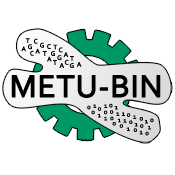Team:METU-BIN Ankara/Notebook
From 2011.igem.org
| Line 71: | Line 71: | ||
<p class="p">To work more effectively on our Project and to improve our knowledge we started to read articles and discuss them at our weekly meetings.</p> | <p class="p">To work more effectively on our Project and to improve our knowledge we started to read articles and discuss them at our weekly meetings.</p> | ||
| - | <ul> | + | <ul style="list-style:none;"> |
| - | + | <li>M. T. Cooling, V. Rouilly, G. Misirli, J. Lawson, T. Yu,J. Hallinan,A. Wipat.Standard virtual biological parts: a repository of modular modeling components for synthetic biology, Bioinformatics, 2010</li> | |
| - | <li>M. T. Cooling, V. Rouilly, G. Misirli, J. Lawson, T. Yu,J. Hallinan,A. Wipat.Standard virtual biological parts: a | + | |
<li>Anthony D. Hill, Jonathan R. Tomshine, Emma M. B. Weeding, Vassilios | <li>Anthony D. Hill, Jonathan R. Tomshine, Emma M. B. Weeding, Vassilios | ||
| - | Sotiropoulos, Yiannis N. Kaznessis, Yiannis N. Kaznessis. SynBioSS: | + | Sotiropoulos, Yiannis N. Kaznessis, Yiannis N. Kaznessis. SynBioSS: the synthetic biology modeling suite. Bioinformatics, 2008</li> |
| - | <li>Ernesto Andrianantoandro, Subhayu Basu,David K Karig, Ron Weiss. Synthetic biology: | + | <li>Ernesto Andrianantoandro, Subhayu Basu,David K Karig, Ron Weiss. Synthetic biology: new engineering rules for an emerging discipline. Bioinformatics. 2006</li> |
| - | <li>Priscilla E. M. Purnick, Ron Weiss. The second wave of synthetic biology: from modules | + | <li>Priscilla E. M. Purnick, Ron Weiss. The second wave of synthetic biology: from modules to systems. Nature. 2009</li> |
| - | <li>Raik Grunberg, Luis Serrano. Strategies for protein synthetic | + | <li>Raik Grunberg, Luis Serrano. Strategies for protein synthetic biology. Nucleic Acid Research, 2010</li> |
| - | <li>Sean C. Sleight, Bryan A. Bartley, Jane A. Lieviant, Herbert M. | + | <li>Sean C. Sleight, Bryan A. Bartley, Jane A. Lieviant, Herbert M. Sauro. In-Fusion BioBrick assembly and re-engineering, 2010</li> |
<li>Yizhi Cai, Mandy L. Wilson, Jean Peccoud. GenoCAD for iGEM: a grammatical approach to | <li>Yizhi Cai, Mandy L. Wilson, Jean Peccoud. GenoCAD for iGEM: a grammatical approach to | ||
| Line 91: | Line 90: | ||
<li>Barry Canton, Anna Labno, Drew Endy. Refinement and standardization of synthetic biological parts and devices. Nature Biotechnology, 2008</li> | <li>Barry Canton, Anna Labno, Drew Endy. Refinement and standardization of synthetic biological parts and devices. Nature Biotechnology, 2008</li> | ||
| - | <li>Tom Ellis, Xiao Wang, James J Collins. Diversity-based, model-guided | + | <li>Tom Ellis, Xiao Wang, James J Collins. Diversity-based, model-guided construction of synthetic gene networks with predicted functions, Nature Biotechnology, 2009</li> |
| - | <li>Kurt W Kohn and Mirit I Aladjem. Circuit diagrams for biological | + | <li>Kurt W Kohn and Mirit I Aladjem. Circuit diagrams for biological networks, Molecular Systems Biology, 2006</li> |
| - | <li>Yong-Jun Shin, Mehrdad Nourani.Statecharts for Gene Network Modeling, | + | <li>Yong-Jun Shin, Mehrdad Nourani.Statecharts for Gene Network Modeling, PLoS ONE, 2009</li> |
| - | <li>Christopher A Voigt. Genetic parts to program bacteria, Current | + | <li>Christopher A Voigt. Genetic parts to program bacteria, Current Opinion in Biotechnology, 2006</li> |
</ul> | </ul> | ||
We looked into last years software teams and discussed their projects. | We looked into last years software teams and discussed their projects. | ||
Revision as of 09:06, 20 September 2011
Notebook
March 2011
Kick-Off of METU-BIN iGEM Software Team: As new members from different disciplines joined, our team got more powerful. Then, we started to know more about each other to understand how to determine our strategy to be successful in iGEM competition.
Reaching out to our Potential Sponsors: The content and organization of our sponsorship package is discussed and all information is pulled together into one package for easy presentation. Also, we have practiced on how to present our project to specific companies and thus worked hard on basics of synthetic biology. In order to raise some funds for the team, we have entered into the Hacettepe Technopolis Innovation Project Competition “Teknovasyon 2011” with a scientific project on synthetic biology. Our project was about MRSA biosensor modified by synthetic DNA technology.
All team members prepared presentations on iGEM and synthetic biology and these presentations helped us to open up the communication between the team members coming from different fields and educated us on different aspects of iGEM competition, synthetic biology and software development. As a software field, we had to have a good understanding of molecular biology, genetics, synthetic biology and computer sciences. Thus, we created an environment where people in every field, could provide useful and innovative advice.
Towards the end of March 2011, we got a little more into the competition, and Yener who was a competitor at iGEM 2010 talked about his experiences and explained the Registry of Standard Biological Parts. This was the key moments because, as a software team programming a software that integrates the Registry, we should know and understand the Registry completely.
April 2011
In Turkey, synthetic biology and the opportunities it presents is not a well-known even within the academia. We, as an iGEM team, had the responsibility to spread the word and introduce the field of synthetic biology. Thus, we decided to organize a roundtable discussion at HIBIT’11 conference and inform researchers whose domain is mainly bioinformatics about the synthetic biology, iGEM competition, and the Parts Registry as a new field for translational research.
HIBIT is an annual international symposium on Health Informatics and Bioinformatics which aims to bring together academicians, researchers and practitioners from the general area of health or medical informatics and bioinformatics or computational biology. All poster, workshop and roundtable applications are peer reviewed before acceptance and we were invited to hold our roundtable during HIBIT 11 on 3rd of April 2011, you can find more details on our human practice page.
During the month of April our effort to find sponsorships continued and we have visited few companies in Ankara, Turkey.
May 2011
Our first potential sponsor was the METU-Technopolis, who have promised to cover the team registration fees for the competition.
METU-BIN registered iGEM 2011 as a software team.
We have been placed 5th place at nation-wide project competition organized by Hacettepe University with our project titled "GENETICALLY ENGINEERED MRSA BIOSENSOR BASED ON SYNTHETIC DNA TECHNOLOGY" and got our first financial support for 2011 İGEM competition. We have been placed 5th place and got our first financial support for 2011 iGEM competition.
We have been accepted to organize a roundtable at HIBIT’11 about synthetic biology, iGEM and Parts Registry. Our topic was “Applications of Bioinformatics for Synthetic Biology”. In the roundtable we firstly explained what is synthetic biology, its importance to humankind and in which fields it can be used. Then we informed audience about iGEM and Parts Registry and discussed such topics as safety, security, ethics, or ownership, sharing, and innovation.
To work more effectively on our Project and to improve our knowledge we started to read articles and discuss them at our weekly meetings.
- M. T. Cooling, V. Rouilly, G. Misirli, J. Lawson, T. Yu,J. Hallinan,A. Wipat.Standard virtual biological parts: a repository of modular modeling components for synthetic biology, Bioinformatics, 2010
- Anthony D. Hill, Jonathan R. Tomshine, Emma M. B. Weeding, Vassilios Sotiropoulos, Yiannis N. Kaznessis, Yiannis N. Kaznessis. SynBioSS: the synthetic biology modeling suite. Bioinformatics, 2008
- Ernesto Andrianantoandro, Subhayu Basu,David K Karig, Ron Weiss. Synthetic biology: new engineering rules for an emerging discipline. Bioinformatics. 2006
- Priscilla E. M. Purnick, Ron Weiss. The second wave of synthetic biology: from modules to systems. Nature. 2009
- Raik Grunberg, Luis Serrano. Strategies for protein synthetic biology. Nucleic Acid Research, 2010
- Sean C. Sleight, Bryan A. Bartley, Jane A. Lieviant, Herbert M. Sauro. In-Fusion BioBrick assembly and re-engineering, 2010
- Yizhi Cai, Mandy L. Wilson, Jean Peccoud. GenoCAD for iGEM: a grammatical approach to the design of standard-compliant constructs. NAR, 2010
- Barry Canton, Anna Labno, Drew Endy. Refinement and standardization of synthetic biological parts and devices. Nature Biotechnology, 2008
- Tom Ellis, Xiao Wang, James J Collins. Diversity-based, model-guided construction of synthetic gene networks with predicted functions, Nature Biotechnology, 2009
- Kurt W Kohn and Mirit I Aladjem. Circuit diagrams for biological networks, Molecular Systems Biology, 2006
- Yong-Jun Shin, Mehrdad Nourani.Statecharts for Gene Network Modeling, PLoS ONE, 2009
- Christopher A Voigt. Genetic parts to program bacteria, Current Opinion in Biotechnology, 2006
 "
"






